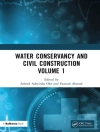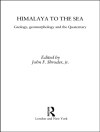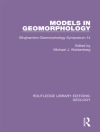Chemical warfare materiel (CWM) is a collection of diverse items that were used during 60 years of efforts by the United States to develop a capability for conducting chemical warfare. Nonstockpile CWM, which is not included in the current U.S. inventory of chemical munitions, includes buried materiel, recovered materiel, binary chemical weapons, former production facilities, and miscellaneous materiel. CWM that was buried in pits on former military sites is now being dug up as the land is being developed for other purposes. Other CWM is on or near the surface at former test and firing ranges. According to the Chemical Weapons Convention (CWC), which was ratified by the United States in April 1997, nonstockpile CWM items in storage at the time of ratification must be destroyed by 2007.The U.S. Army is the designated executive agent for destroying CWM. Nonstockpile CWM is being handled by the Non-Stockpile Chemical Materiel Program (NSCMP); stockpile CWM is the responsibility of the Chemical Stockpile Disposal Program. Because nonstockpile CWM is stored or buried in many locations, the Army is developing transportable disposal systems that can be moved from site to site as needed. The Army has plans to test prototypes of three transportable systemsthe rapid response system (RRS), the munitions management device (MMD), and the explosive destruction system (EDS)for accessing and destroying a range of nonstockpile chemical agents and militarized industrial chemicals. The RRS is designed to treat recovered chemical agent identification sets (CAIS), which contain small amounts of chemical agents and a variety of highly toxic industrial chemicals. The MMD is designed to treat nonexplosively configured chemical munitions. The EDS is designed to treat munitions containing chemical agents with energetics equivalent to three pounds of TNT or less. These munitions are considered too unstable to be transported or stored. A prototype EDS system has recently been tested in England by non-stockpile program personnel. Although originally proposed for evaluation in this report, no test data were available to the committee on the composition of wastes from the EDS. Therefore, alternative technologies for the destruction of EDS wastes will be discussed in a supplemental report in fall 2001. Treatment of solid wastes, such as metal munition bodies, packing materials, and carbon air filters, were excluded from this report.Review and Evaluation of the Army Non-Stockpile Chemical Materiel Disposal Program: Disposal of Neutralent Wastes evaluates the near-term (1999-2005) application of advanced (nonincineration) technologies, such as from the Army’s Assembled Chemical Weapons Assessment Program and the Alternative Technologies and Approaches Project, in a semi-fixed, skid-mounted mode to process Rapid Response System, Munitions Management Device, and Explosive Destruction System liquid neutralization wastes.
Board on Army Science and Technology & Committee on Review and Evaluation of the Army Non-Stockpile Chemical Materiel Disposal Program
Disposal of Neutralent Wastes [PDF ebook]
Review and Evaluation of the Army Non-Stockpile Chemical Materiel Disposal Program
Disposal of Neutralent Wastes [PDF ebook]
Review and Evaluation of the Army Non-Stockpile Chemical Materiel Disposal Program
Cumpărați această carte electronică și primiți încă 1 GRATUIT!
Limba Engleză ● Format PDF ● Pagini 78 ● ISBN 9780309511636 ● Editura National Academies Press ● Publicat 2001 ● Descărcabil 3 ori ● Valută EUR ● ID 7146078 ● Protecție împotriva copiilor Adobe DRM
Necesită un cititor de ebook capabil de DRM












